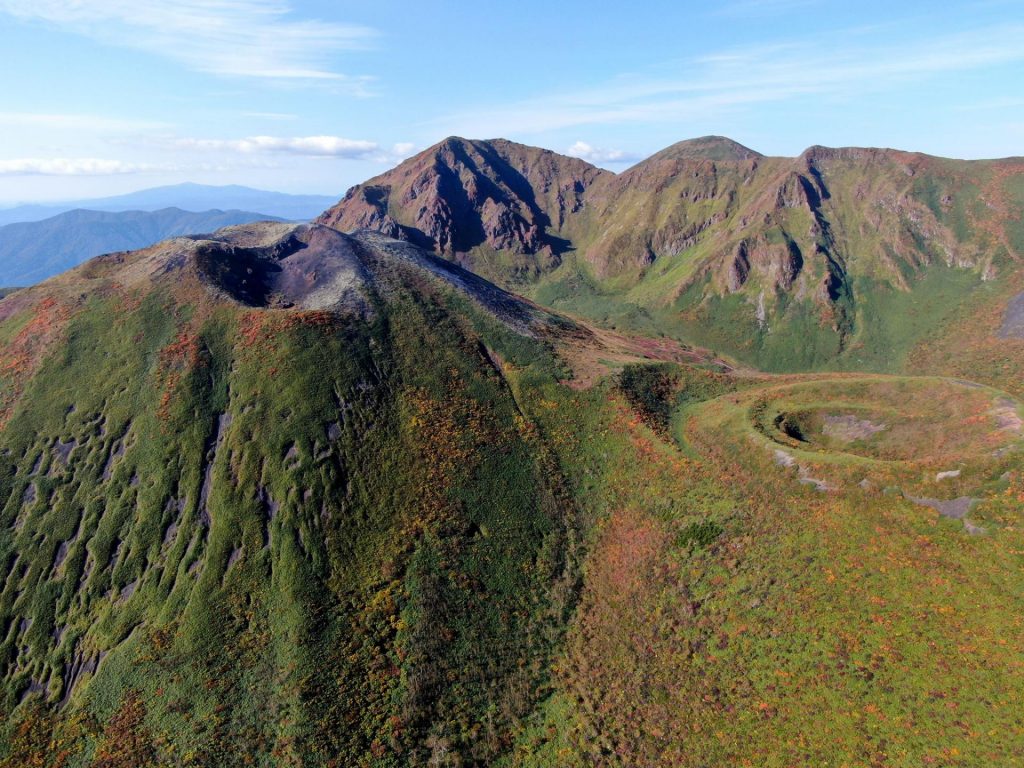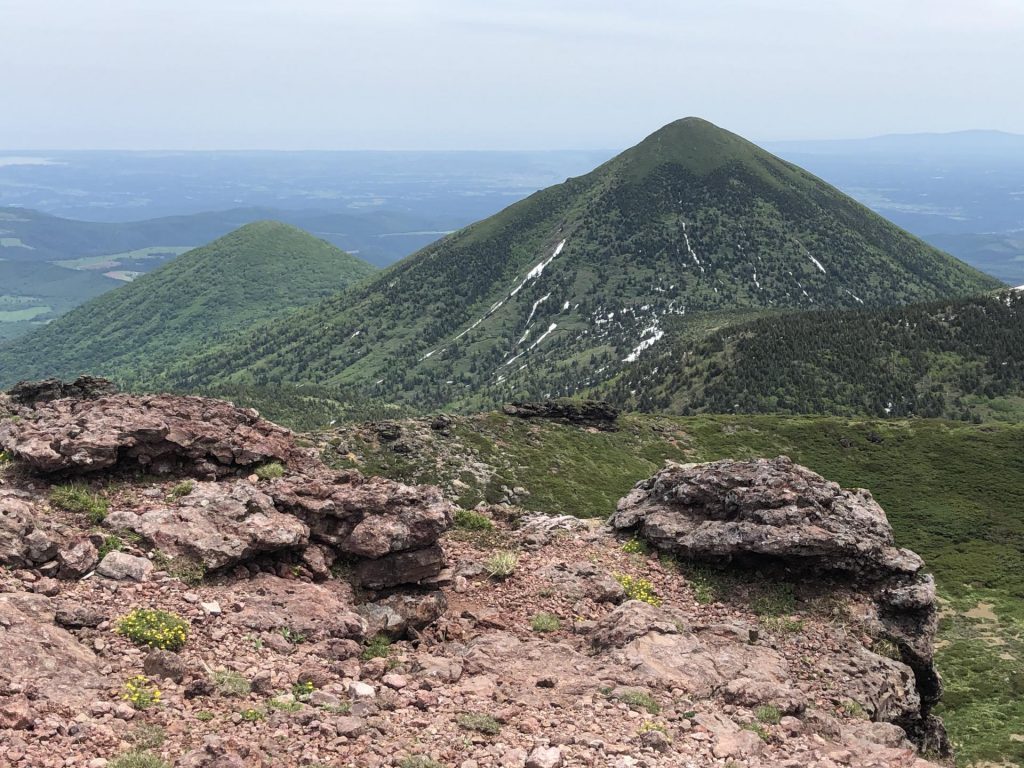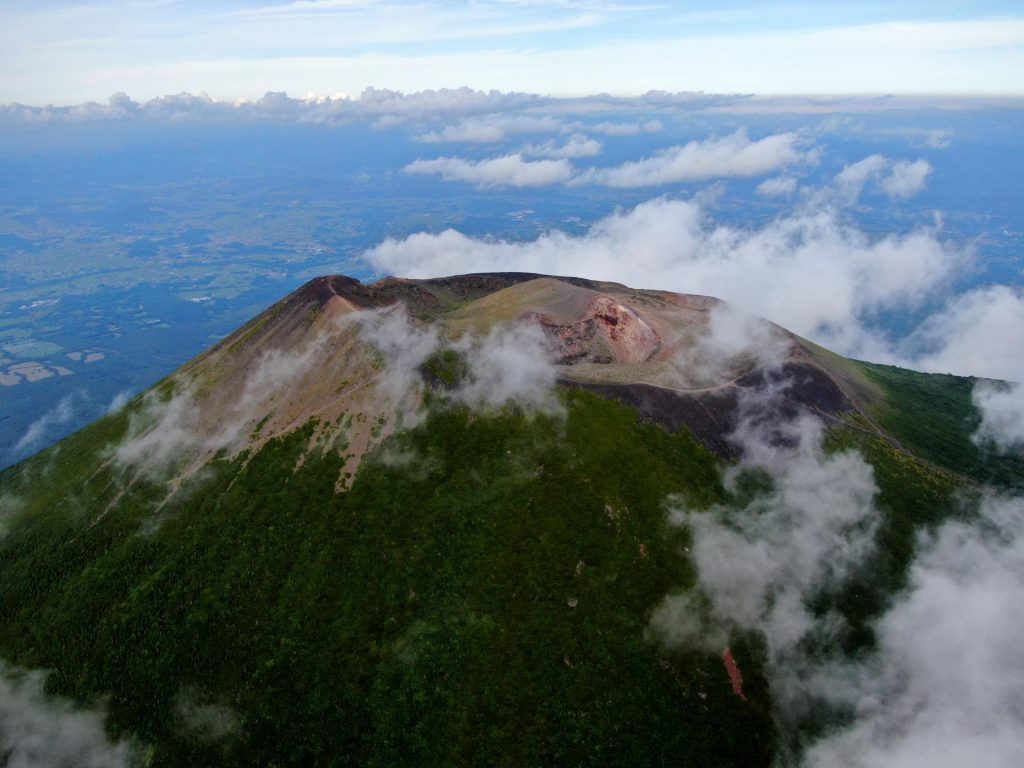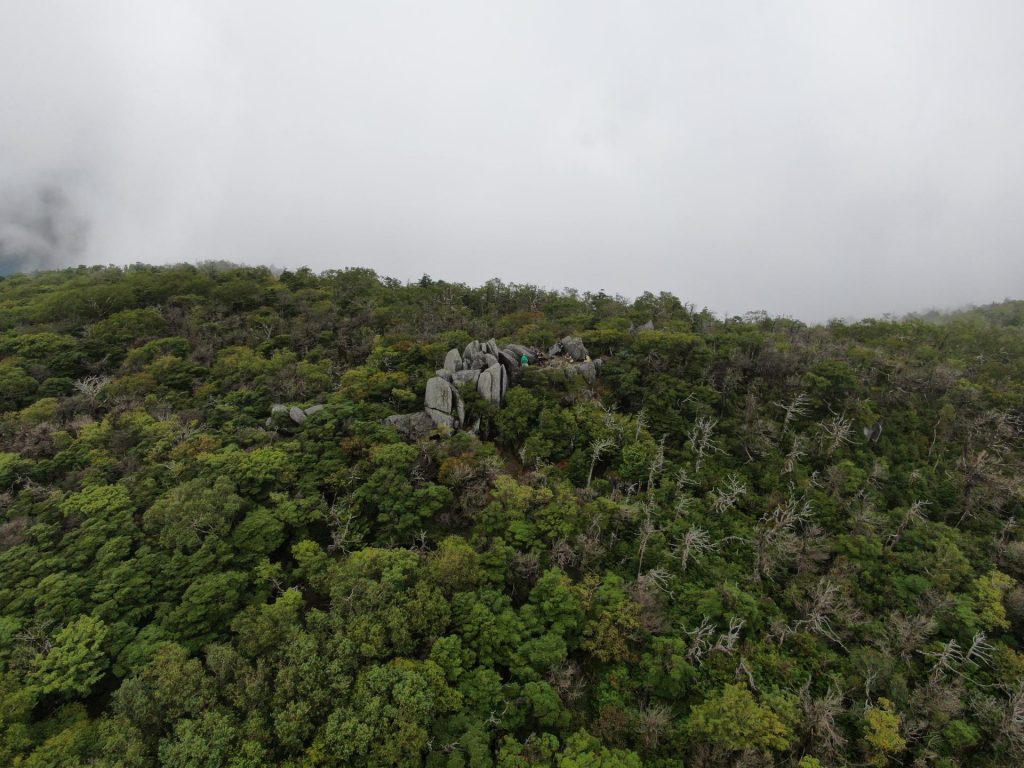Northern Tohoku’s Top 5 Spring Hikes
Chase the cherry blossoms north and enjoy five of Tohoku’s best hikes this spring. The higher mountains in Honshu’s northernmost region still have snow through the end of June, so come prepared and exercise caution as trails can be hard to find under the spring snow.
Hachimantai Summit Area
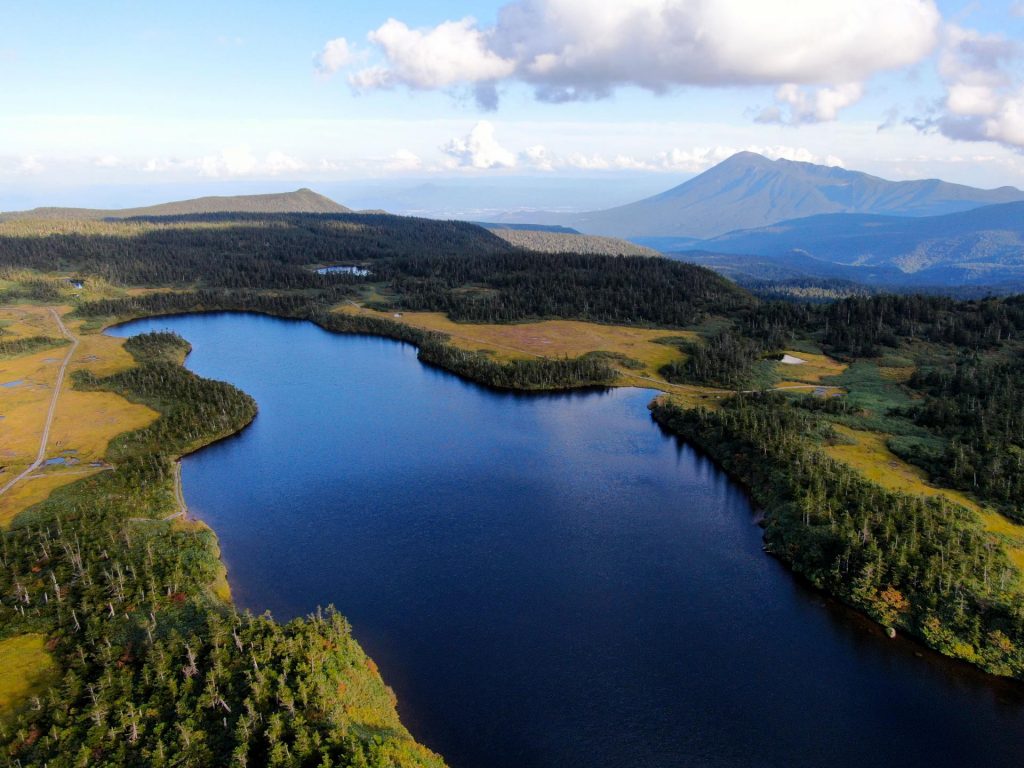
Hachimantai Summit Area
The Hachimantai Aspite Line is a 27-kilometer stretch of road that goes from Iwate to Akita. When it opens on April 15, there is a long corridor of snow that is four or five meters high on each side of the road over much of that distance. Enjoy seeing the cherry blossoms at the bottom of the mountain, drive up to the summit and park, then put on your snowshoes and walk over the the deep snow and enjoy stunning views of nearby Mt. Iwate and Mt. Mokko. There are tons of trails for all levels, and even easy ones for kids. Distances vary as you can just walk around near the parking lot, or walk in any number of loops around the lakes. Check out the “Dragon Eye” in early June!
Akita Komagatake

Akita Komagatake
Akita Komagatake is a stratovolcano with five main peaks, the highest of which is called Onamedake (1,637 meters). While you can enjoy this mountain all year round, the most enjoyable way to hike it from the trailhead at Kunimi Onsen, which opens on May 7. It’s a fairly steep ascent for the first hour, but then it opens up as you reach the rim of the vast volcano caldera. The views of the volcano are just breathtaking. There are a variety of ways you can go, but if you keep it simple and just hit the main summit and come back, it’s about 11 kilometers with a total ascent of 940 meters. This Tohoku hike is guaranteed to please.
Hakkoda

Hakkoda – Photo by Paul Vanderheiden
Hakkoda keeps its snow until July most years, so take the ropeway up and enjoy hiking as near or far as you like! There are there summits nearby that you can hike up, or you could just walk around on the snow casually and have a picnic before going back down. Like Hachimantai, there are multiple routes, and you can enjoy it in a number of ways depending how much time you have or your fitness level.
Mt. Iwate

Mt. Iwate
Mt. Iwate is a the highest mountain in the same prefecture, and officially “opens” on July 1. That said, people climb it all year round. It can be dangerous in the winter, but through most of June it’s great for intermediate hikers that are looking for a challenge. During this season, it’s best to stick to the Umagaeshi or Omisaka trails. (Save the longer, more glorious, routes for later in the year!) Mt. Iwate is shaped somewhat similar to Mt. Fuji, and—like Fuji-san—you can enjoy walking along the rim of a volcanic caldera at the summit. The Umagaeshi Trail is short and direct, about 11 kilometers with an ascent of 1,500 meters. The Omisaka can be a bit steeper and is 12.5 kilometers with a 1,566-meter ascent. Both can take a good six to ten hours depending on your speed. Plan accordingly so you don’t run out of daylight!
Mt. Goya

Mt. Goya
Mt. Goya is located near the Sanriku Coast, and you’re likely to see some deer while walking up here. It’s less strenuous than some of the other hikes—with a distance of around 8 kilometers and an ascent of just 650 meters—and there is an interesting rock formation near the summit that is considered sacred. Many local hikers go there for the flowers that bloom throughout June.
Getting There
Starting this April, JR East has made its two most popular passes, the Tohoku area and the Nagano/Niigata area pass, available to anyone with a foreign passport regardless of visa type. These passes were previously only available for temporary visitors, but foreign residents can now also take advantage of these deals.
These passes offer unlimited rides in their regions over five consecutive days. This includes bullet train, local, rapid and limited express trains and some JR East buses.
The Tohoku pass costs ¥20,000 for adults and ¥10,000 for children. It allows for travel within Tokyo, Kanagawa, Chiba, Saitama, Gunma, Tochigi, Ibaraki, Miyagi, Fukushima, Yamagata, Akita, Iwate and Aomori. The fare costs the same regardless of where they are purchased.
The Nagano/Niigata pass costs ¥18,000 for adults and ¥9,000 for children. It covers Matsumoto and Hakuba.
Visit East Japan Rail for more information or to book online.
Northern Tohoku’s Top 5 Spring Hikes





